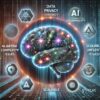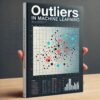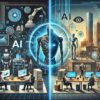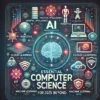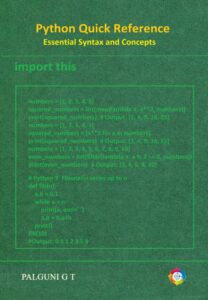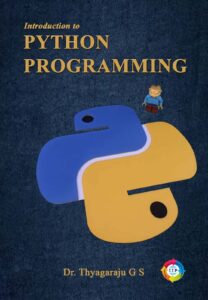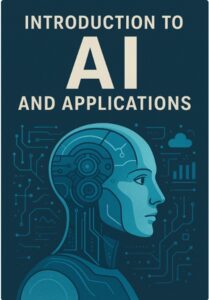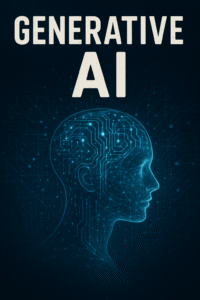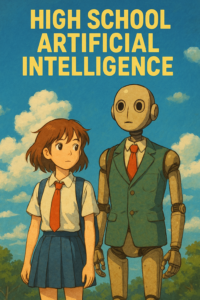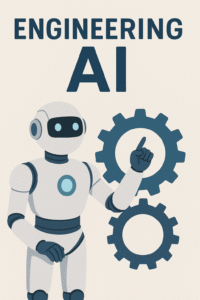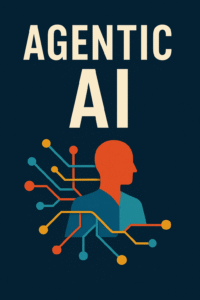“Everyone tries to exploit context, but context is like God—it follows its own path beyond human control.”
The Evolution of AI: Understanding the Difference Between Transitional AI and Agentic AI
Transitional AI assists humans by automating tasks and improving through learning but still requires supervision. It enhances decision-making without independent goal-setting. Examples include AI chatbots, recommendation engines, and AI copilots for coding.
Agentic AI, however, is fully autonomous, capable of setting and achieving goals without human intervention. It dynamically adapts, learns across domains, and makes complex decisions independently. Examples include self-improving research assistants and autonomous business AI systems.
The key difference: Transitional AI supports human efforts, while Agentic AI acts independently. As AI evolves, the shift toward Agentic AI will bring transformative opportunities and challenges.
AI in the Legal System: Proving What Is Right or Wrong
Artificial Intelligence (AI) is transforming various industries, including healthcare, finance, and manufacturing. However, its impact on the legal system is particularly significant as it raises important questions about fairness, ethics, and justice. The legal system relies on principles of right and wrong, often determined through evidence, legal precedents, and judicial reasoning. AI has the potential to enhance this process by analyzing complex legal data, detecting inconsistencies, and providing unbiased insights. But can AI truly be used to prove what is right or wrong?
The Role of Humans in the Future World with Emerging Technologies: Challenges, Opportunities, and Preparations
The rapid advancement of technologies such as Artificial Intelligence (AI), Quantum Computing, Cybersecurity, the Internet of Things (IoT), Digital Twins, Genetic Engineering, Augmented and Virtual Reality (AR/VR), Robotics, Drug Discovery, and Electric Autonomous Vehicles is reshaping our world at an unprecedented pace. While these technologies offer immense benefits, they also pose significant challenges and risks. This article explores the evolving role of humans in this technologically advanced future, the potential dark sides of these innovations, and the necessary preparations to navigate this new era effectively.
The Future Classroom: A Glimpse into Tomorrow’s Education
The concept of the classroom has been evolving for centuries, but the future of education is set to undergo a revolutionary transformation. With advancements in technology, personalized learning, and innovative teaching methods, the future classroom will be a dynamic and immersive environment designed to foster creativity, critical thinking, and collaboration.
The Rise of Dark AI: Unmasking the Threats and Ethical Challenges
Artificial Intelligence (AI) has revolutionized numerous industries, from healthcare and finance to education and cybersecurity. While ethical AI aims to benefit society by increasing efficiency, accuracy, and accessibility, the darker side of AI—referred to as Dark AI—poses significant risks. Dark AI encompasses AI models designed or manipulated for unethical, harmful, and even illegal activities. From generating phishing emails and deepfakes to automating cyberattacks, Dark AI has created new challenges for cybersecurity experts, policymakers, and businesses alike.
Challenges of Machine Learning
Machine learning (ML) has revolutionized industries, driving innovations in healthcare, finance, automation, and artificial intelligence. However, despite its immense potential, machine learning faces significant challenges that hinder its adoption and effectiveness. These challenges range from data-related issues to algorithmic complexities, scalability, and real-world deployment hurdles. This article explores the key challenges of machine learning and potential strategies to address them.
Machine Learning: What It Is, How It Works, and Its Types.
Machine Learning (ML) is a branch of artificial intelligence (AI) that enables computers to learn from data and make decisions without being explicitly programmed. Instead of relying on predefined rules, ML algorithms analyze data patterns and improve their performance over time as they are exposed to more data. This capability makes machine learning a powerful tool for automating tasks, uncovering insights, and building intelligent systems.
Uncovering Insights and Identifying Patterns in Data Science
Data Science is a powerful field that helps organizations make informed decisions by analyzing and interpreting data. Two key concepts in Data Science are insights and patterns. These elements enable businesses and researchers to understand trends, predict future behaviors, and optimize operations. In this article, we will explore what insights and patterns mean in Data Science, their significance, and real-world examples using actual datasets.
The Role of Machine Learning in Modern Technology: Need, Definition, and Its Interdisciplinary Impact
In today’s fast-paced digital world, we generate vast amounts of data every second. From social media interactions to online transactions, data is everywhere. However, making sense of this data manually is impractical. This is where Machine Learning (ML) comes in—a revolutionary technology that enables computers to learn from data and make intelligent decisions. But why do we need ML? What exactly is it? And how does it relate to other fields like Artificial Intelligence (AI), Data Science, and Statistics? Let’s explore.
Missing Data
Missing data is a common problem in machine learning and data analysis. When datasets have empty or null values, it can negatively impact model accuracy and decision-making. Handling missing data effectively is crucial for building reliable models and drawing meaningful insights. In this article, we will explore what missing data is, why it occurs, and different techniques to handle it, with real-world examples.
Dirty Data and Clean Data
Data is the foundation of machine learning and data analysis. The accuracy of a model heavily depends on the quality of the data used for training. In the world of data science, we often deal with two types of data: dirty data and clean data. Understanding these concepts is crucial for building accurate, reliable, and effective models.
Outliers
Outliers are data points that deviate significantly from the rest of the dataset. They can distort statistical analyses, degrade model performance, and mislead insights if not handled properly. In this article, we explore what outliers are, their types, methods to detect them, real-world examples, and how to deal with them in machine learning.
Bias and Variance
Bias and variance are two fundamental sources of error in machine learning models. Striking the right balance between them is crucial for building models that generalize well to unseen data. This article delves into the concepts of bias and variance, provides real-world examples, and offers a comparative analysis to better understand their impact.
The Future of AI Jobs: A Comparative Analysis of Opportunities for Aspirants With and Without AI Skills
The rapid evolution of artificial intelligence (AI) has brought about profound changes in the workforce, disrupting industries and transforming job roles. Bill Gates’ recent insights on AI’s impact underscore the need for professionals to adapt or risk obsolescence. While some jobs remain relatively secure, many roles will undergo significant changes, creating a divide between those with AI skills and those without. This article delves into the future landscape of AI-driven jobs and provides a comparative analysis of technical and software jobs for AI-skilled and non-AI-skilled aspirants.
AI Is Not a Tool; It Is an Agent!
In a thought-provoking conversation, historian and philosopher Yuval Noah Harari presented a groundbreaking perspective: artificial intelligence (AI) is not just a tool; it is an agent. This distinction is crucial to understanding the transformative power of AI in the modern world.
Top 10 Highest Paying Tech Jobs For 2025
As technology continues to drive innovation and redefine industries, tech jobs remain among the highest-paying careers globally. With advancements in AI, IoT, cloud computing, and cybersecurity, professionals in these domains are highly sought after. This article outlines the top 10 tech jobs of 2025, highlighting their roles, required skills, and earning potential.
AI Agents and Their Types
Artificial Intelligence (AI) agents are at the heart of many modern technologies, from personal voice assistants to self-driving cars and sophisticated recommendation systems. These agents act autonomously in various environments, analyzing data, making decisions, and carrying out actions to achieve specific goals. As AI continues to evolve, understanding the different types of AI agents and their applications becomes essential for appreciating how these technologies impact our daily lives and industries.
Top 10 Technology Trends for 2025
Gartner Inc. recently shared its top 10 technology trends for 2025 at their IT Symposium. These trends focus on how AI, new computing methods, and better human-machine partnerships will shape the future. Here’s a look at each trend, explained in simple terms.
Essential Computer Science Skills for 2025 and Beyond
As we advance into a more technology-driven future, the demand for specialized computer science skills has reached unprecedented heights. Emerging technologies like Artificial Intelligence (AI), robotics, Internet of Things (IoT), and AI-driven agents are transforming industries and opening up new career paths. For professionals and students alike, the path forward requires an understanding of the key skills that will dominate the field in 2025 and beyond.
Let’s dive into the essential computer science skills needed to stay relevant and competitive in this evolving landscape.
Introducing the Next Frontier of Generative AI: AI Agents
The recent boom in generative AI has set the stage for a meteoric rise in AI agents. Industry projections estimate the market for AI agents will grow from USD 5.1 billion in 2024 to an impressive USD 47.1 billion by 2030. This remarkable growth, characterized by a compound annual growth rate (CAGR) of 44.8%, is fueled by breakthroughs in generative AI, enabling Agentic AI to perform increasingly complex tasks with minimal human intervention.






